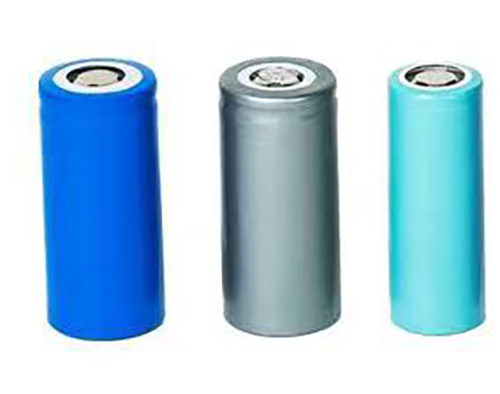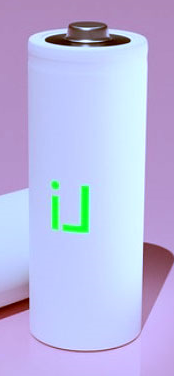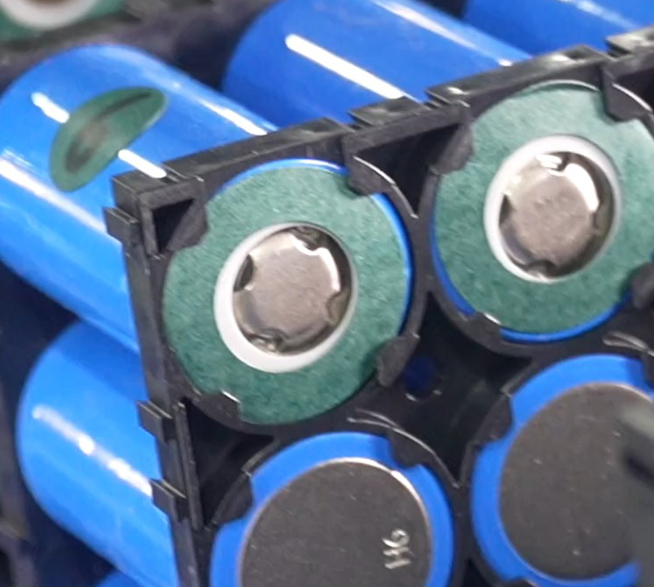Cylindrical 18650 lithium ion cells is said to be the first Japanese SONY company developed a standard lithium-ion battery model, also referred to as 18650, at that time was to save costs and manufactured lithium batteries, 18650 in the "18" represents the battery diameter 18mm, The "65" represents the height of the battery, which is 65 mm. The cylindrical 18650 lithium-ion battery is a widely used battery type, which plays an important role in various fields with its unique cylindrical shape and excellent performance. This standardized size allows for easy manufacturing integration and assembly of the 18650 lithium-ion battery in a variety of applications.
The manufacturing process of the cylindrical 18650 lithium ion cells is a complex and fine process, which can be mainly divided into three stages: the manufacturing front segment, the manufacturing middle segment and the post-segment (screening) process. In terms of structure, the cylindrical 18650 lithium ion cells uses a cylindrical design, which not only makes the battery more compact, but also improves the energy density of the battery. The positive and negative electrode materials inside the battery are separated by a diaphragm, forming a stable electrochemical reaction environment to ensure the safety and stability of the battery. In terms of performance, the cylindrical 18650 lithium ion cells has excellent energy density and discharge performance. This makes it possible to meet a variety of high power, high energy demand application scenarios. At the same time, due to its good stability and safety, cylindrical 18650 lithium-ion batteries are also widely used in electric vehicles, power tools, energy storage systems and other fields.

in the manufacturing process, the main goal is to finish is the cathode piece manufacturing. This includes slurry mixing, coating, rolling, scuttling, filmmaking and die cutting processes. In the slurry mixing process, use a vacuum mixer to evenly mix the positive or negative powder, conductive agent and bonding agent in a certain proportion to form a suspended slurry. In the coating process, the paste is evenly coated on the fluid collector surface by the coating machine, which is crucial to the consistency, cycle life and safety of the lithium battery. The shape and size of the pole sheet are further adjusted in the process of rolling, scuttling and making, so that the subsequent process can proceed smoothly. The main objective of the middle stage process is to complete the manufacturing of the battery cell. Winding is the key step in this stage, and the positive and negative electrode sheets are tightly wound together by the winding machine to form the basic structure of the cell. Subsequently, the liquid injection process injects the electrolyte into the cell to provide the ion transport medium required for the battery. The packaging link uses packaging equipment to seal the battery cell to prevent the leakage of electrolyte and the intrusion of external substances. The latter stage of the process is mainly to screen and test the cell to ensure that its quality and performance meet the standard. This includes the formation treatment of the battery cell, so that the active substances of the positive and negative batteries are excited and have the ability to discharge. At the same time, the OCV measurement, room temperature storage, capacitance separation and other steps of the cell are also carried out to comprehensively evaluate the performance and stability of the cell.
diameter: 18 + / - 0.2 mm
height: 65 + / - 2.0 mm
capacity: More than 1000 mah
single section nominal voltage: 3.6 V or 3.7 V
maximum charging termination voltage: 4.20 V
to conventional capacity is 2200 mah - 3200 mah
charging voltage: 4.2 V to 4.3 V
the minimum discharge termination voltage: 2.75 V
in the whole manufacturing process, the need to use a variety of professional equipment, Such as mixer, coating machine, roll press, slitting machine, production machine, winding machine, injection machine, packaging equipment. The accuracy and performance of these devices directly affect the quality and performance of the battery. In addition, every step in the manufacturing process needs to be tightly controlled to ensure the safety and stability of the battery. For example, in the coating process, it is necessary to strictly control the viscosity, fluidity and coating thickness of the slurry to avoid problems such as uneven coating or too thin thickness. During the winding process, it is also necessary to precisely control the winding tension and speed to ensure the tightness and stability of the cell structure.

[ advantages ]
1, large capacity The capacity of 18650 lithium battery is generally between 1200mAh~3600mAh, and the general battery capacity is only about 800mAh, if combined into 18650 lithium battery pack, the 18650 lithium battery pack can easily break through 5000mAh.
2, long life 18650 lithium battery life is very long, normal use of the cycle life can reach more than 500 times, is more than twice the ordinary battery.
3, high voltage 18650 lithium battery voltage is generally in 3.6 V, 3.8 V and 4.2 V, far higher than that of nickel cadmium and nickel metal hydride battery voltage is 1.2 V.
4, small internal resistance: The internal resistance of the polymer cell is smaller than that of the general liquid cell, and the internal resistance of the domestic polymer cell can even be below 35mΩ, which greatly reduces the power consumption of the battery and extends the standby time of the mobile phone, and can fully reach the level of international standards.
5, 18650 lithium-ion battery pack can series or transmitte synthetic
[ weaknesses]
1, have a fixed volume, When used in a number of products is not convenient to fixed
2, 18650 lithium-ion battery production requires protecting circuits, To prevent the battery discharge caused by excessive filling quantity
3 relatively strict, production conditions, demand is high, High production cost

The cylindrical 18650 lithium ion cells has become an indispensable part of modern life with its unique shape, excellent performance and wide range of applications. With the continuous development of science and technology, it is believed that the cylindrical 18650 lithium ion cells will play a greater role in more fields in the future. In addition, the cylindrical 18650 lithium ion cells also has a long service life and low maintenance costs. Because of its simple structure and easy production, the cost is also relatively low. This makes it more competitive in the market and has been widely welcomed and applied. However, the cylindrical 18650 lithium-ion battery also has some challenges and limitations. For example, in high temperatures or high humidity, the performance of the battery may be affected. In addition, due to the presence of chemicals inside the battery, if improperly handled or abused, it may lead to safety accidents. The manufacturing process of the cylindrical 18650 lithium ion cells is a high-precision and demanding process that requires strict control of every link and parameter to ensure the quality and performance of the final product.